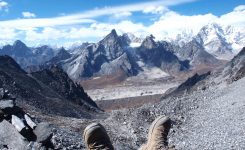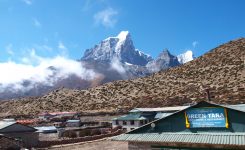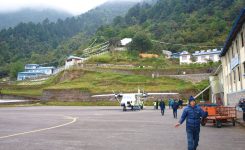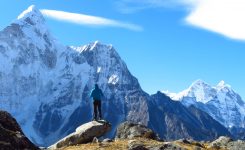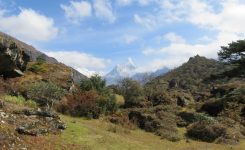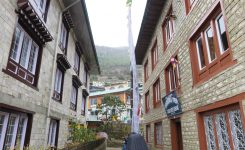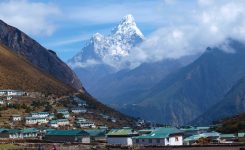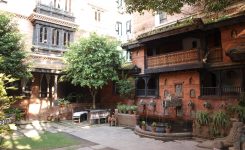Everest Base Camp, Three Passes Trek, Travel
Gorakshep to Everest Base Camp, Everest Base Camp Honeymoon (Day Twelve)
DESTINATION: Gorakshep
ELEVATION: 5,164 meters
ELEVATION GAIN: 224 meters
DISTANCE: 4.3 km (3 hours of walking through a moraine)
OXYGEN: 54% of sea level (previous 56%)
DESTINATION: Everest Base Camp (from Gorakshep)
ELEVATION: 5,364 meters (53% of oxygen sea level)
After our rest day in Lobuche, I woke up that morning, thinking today is the day I will finally see the legendary Everest Base Camp. It was also a little hard to believe that we actually did it, we flew to Nepal, we walked all this way, and we’ll reach a destination I thought was impossible for most to reach. I think at that point; I was getting used to our routine of getting up in a cold teahouse room, unwillingly getting out of my warm sleeping bag and into my frozen hiking boots, putting my contact lenses without a mirror (that’s how good I’ve gotten), brush my teeth with ice-cold water and head to a still cold restaurant cozying up closer to the stove in the middle of the room. That morning though, it didn’t bother me because I was excited to finally see Mount Everest and the base camp where all the great stories of conquering the world start.
Trekking from Lobuche to Gorakshep
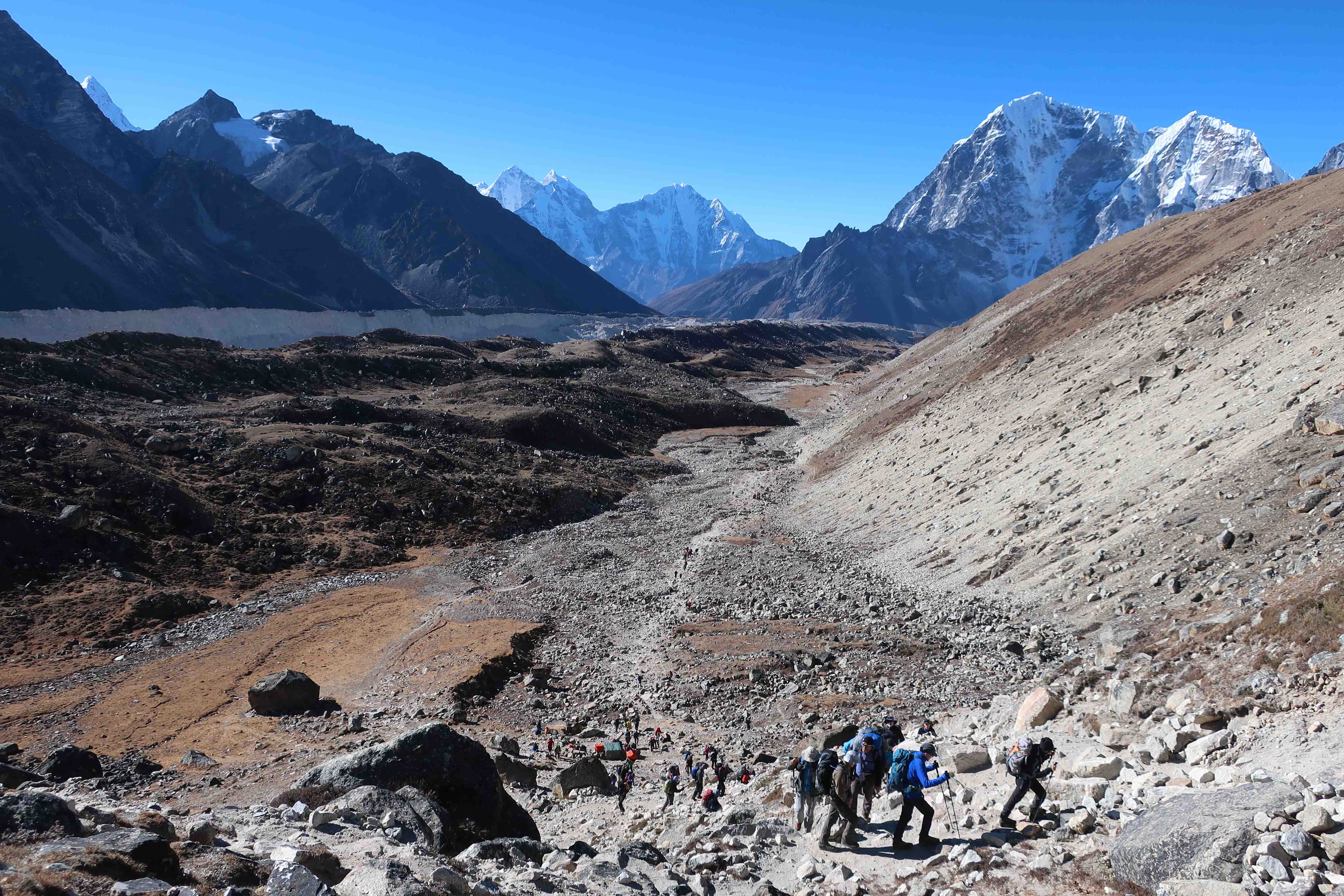
Gorakshep is a small village that sits at over 5,100 meters of elevation. Whether you’re doing only the Everest Base Camp trek or the Three Passes Trek, this will be the highest elevation you’ll sleep at. The Lonely Planet Guide cautioned that most hikers will experience some signs of AMS and that it’ll be hard to fall asleep for most. Surprisingly, I finally felt great and had a good night’s sleep in Gorakshep.
We met a few people who weren’t looking so great, as they were travelling with a group, and this was their final destination before their way down to Namche and back to Kathmandu. For us, after crossing the Kongma La Pass (5,545 m), we were pretty much acclimatized for the trek to the Everest Base Camp. However, we felt the altitude at the top of Kala Patthar (5,643 m), which we did the following day before our trek to Dzongla.
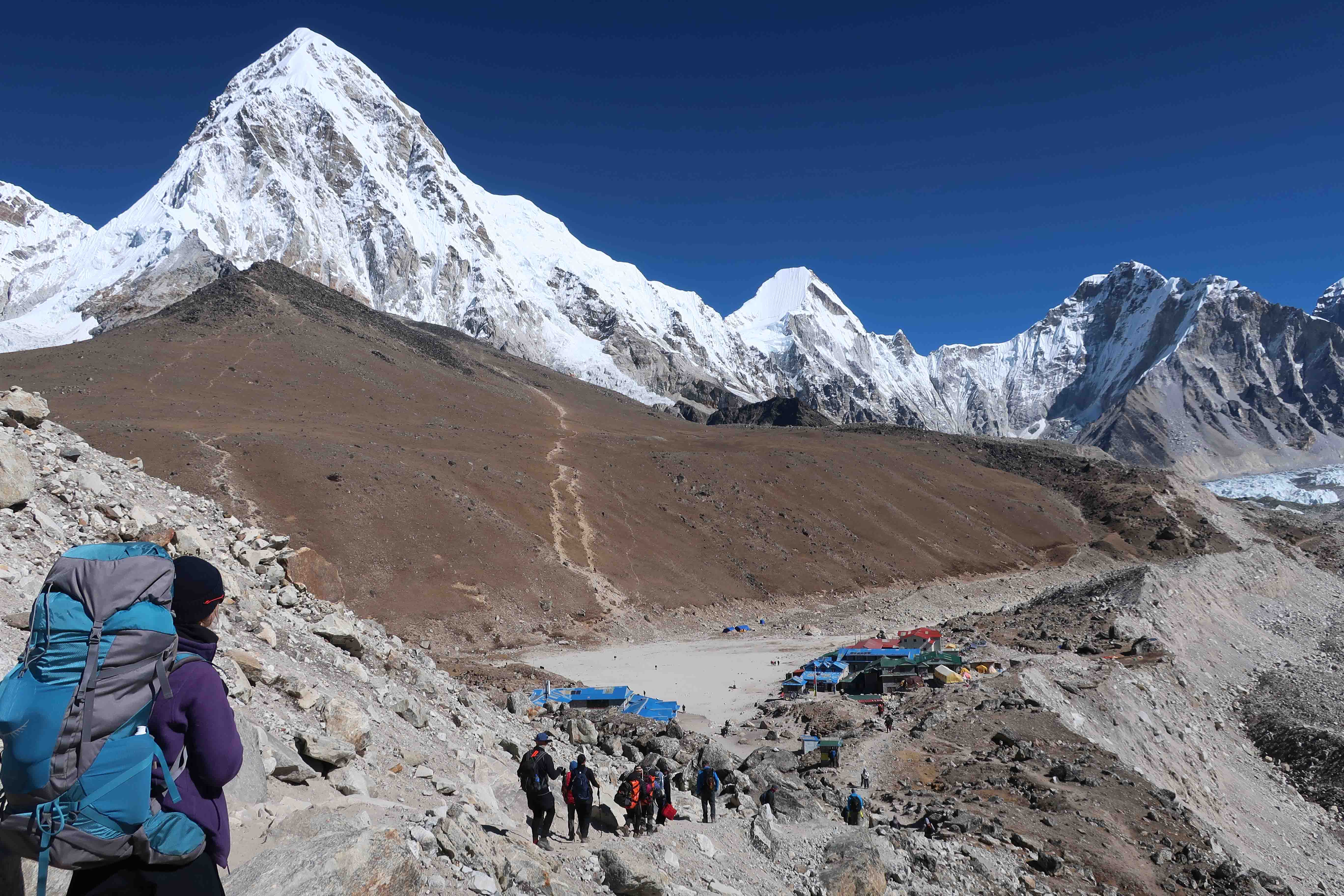
Both Lobuche and Gorak Shep teahouses get booked up quickly, so in the morning, my husband was rushing us to get going (so that we find accommodation). When travelling with a big backpack in a thin air environment, it’s not always a great idea. Picking up the pace too quickly can leave you gasping for air, unable to catch your breath. Slow and steady is the best strategy.
Travel Tip: If you’re doing the Three Passes Trek, you’ll mostly enjoy quieter and more secluded paths. However, the Three Passes Trek crosses paths with the main Everest Base Camp trek, which gets very busy. Groups with a guide usually get accommodation priority, so if you’re travelling without a guide, you may need to make sure you arrive early. We finished our breakfast late, so we had to rush a bit. If you get a chance, leave early, maybe even skip breakfast and head to Gorak Shep before the groups start trekking.
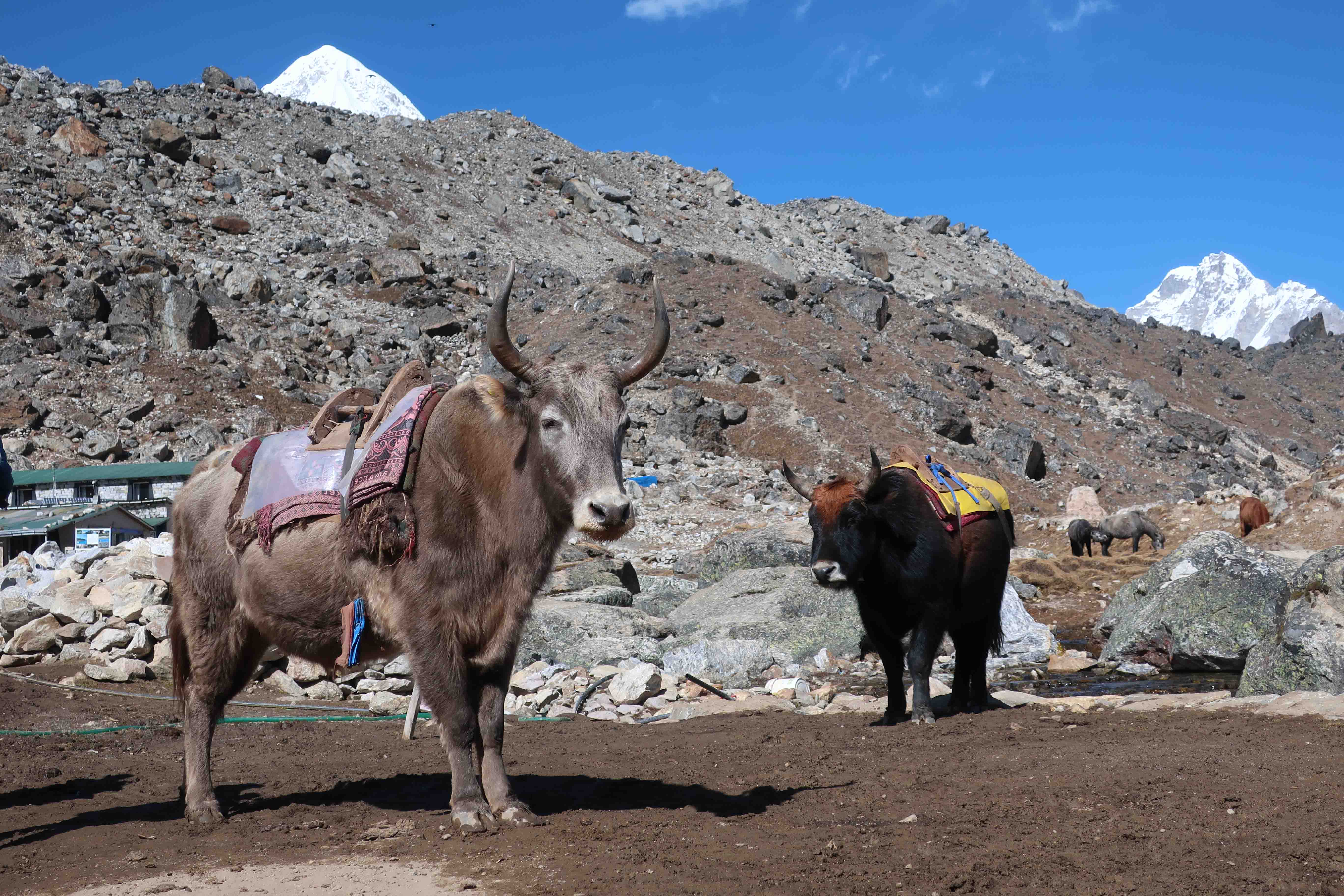
The walk itself from Lobuche to Gorak Shep is not too bad. The two villages are only four kilometres apart but the path to get from Lobuche to Gorak Shep is through a field of moraine grey rocks and tiny trails. There will be lots of ups and downs, and you won’t see much for the most part. When you get closer to Gorak Shep, though, the views of Mount Everest opening up in the distance are impressive. For us, this was the first time seeing the mountain, so it imprinted in my memory.
Accommodation in Gorak Shep
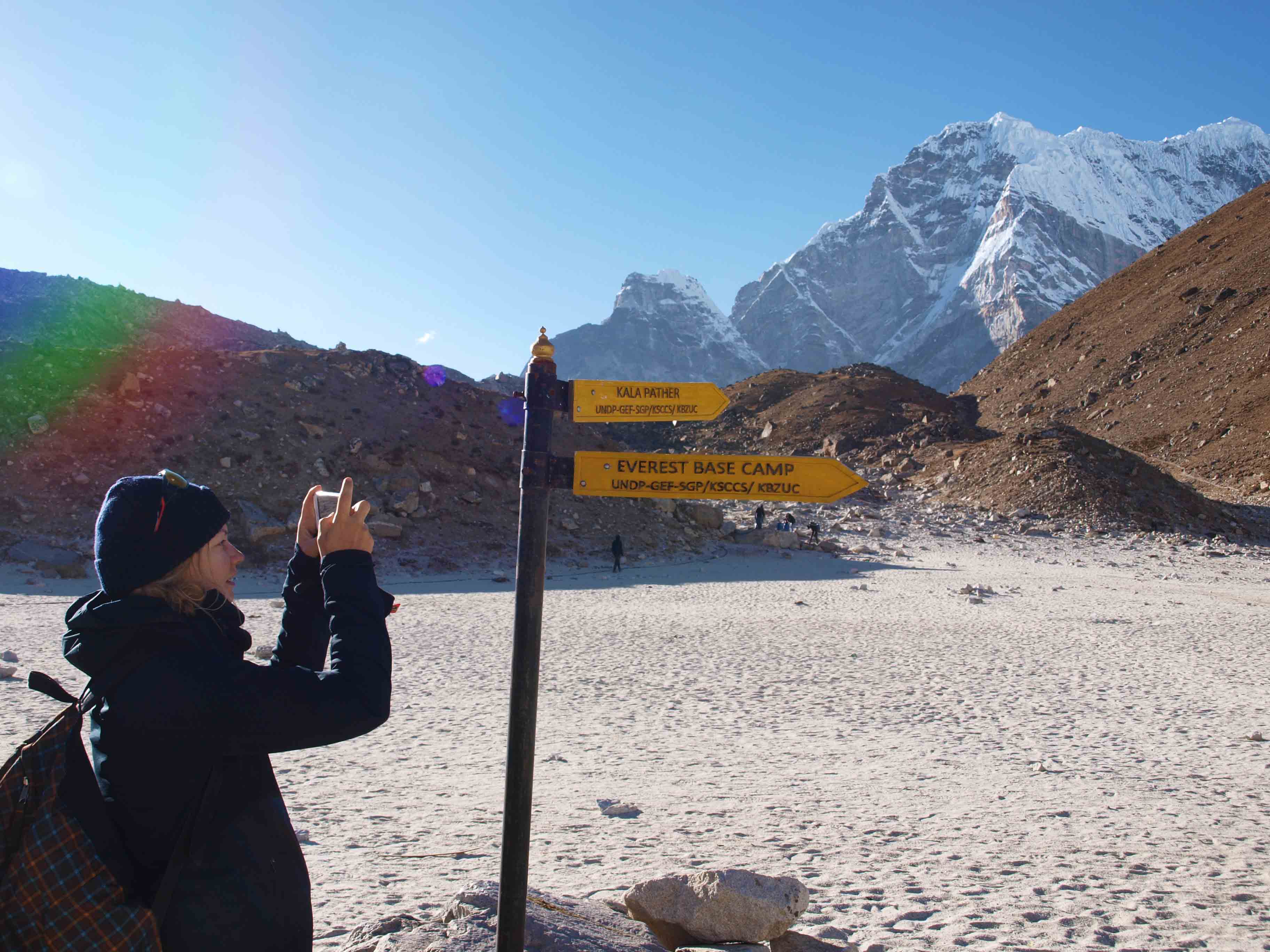
After about a three hour hike, we arrived at Gorak Shep. There aren’t that many accommodation options, so we went to the first one we saw (the Himalayan Lodge) and asked for a room. They had one more room left, so we were lucky to get it. However, the room was probably one of the worst rooms we’ve seen so far.
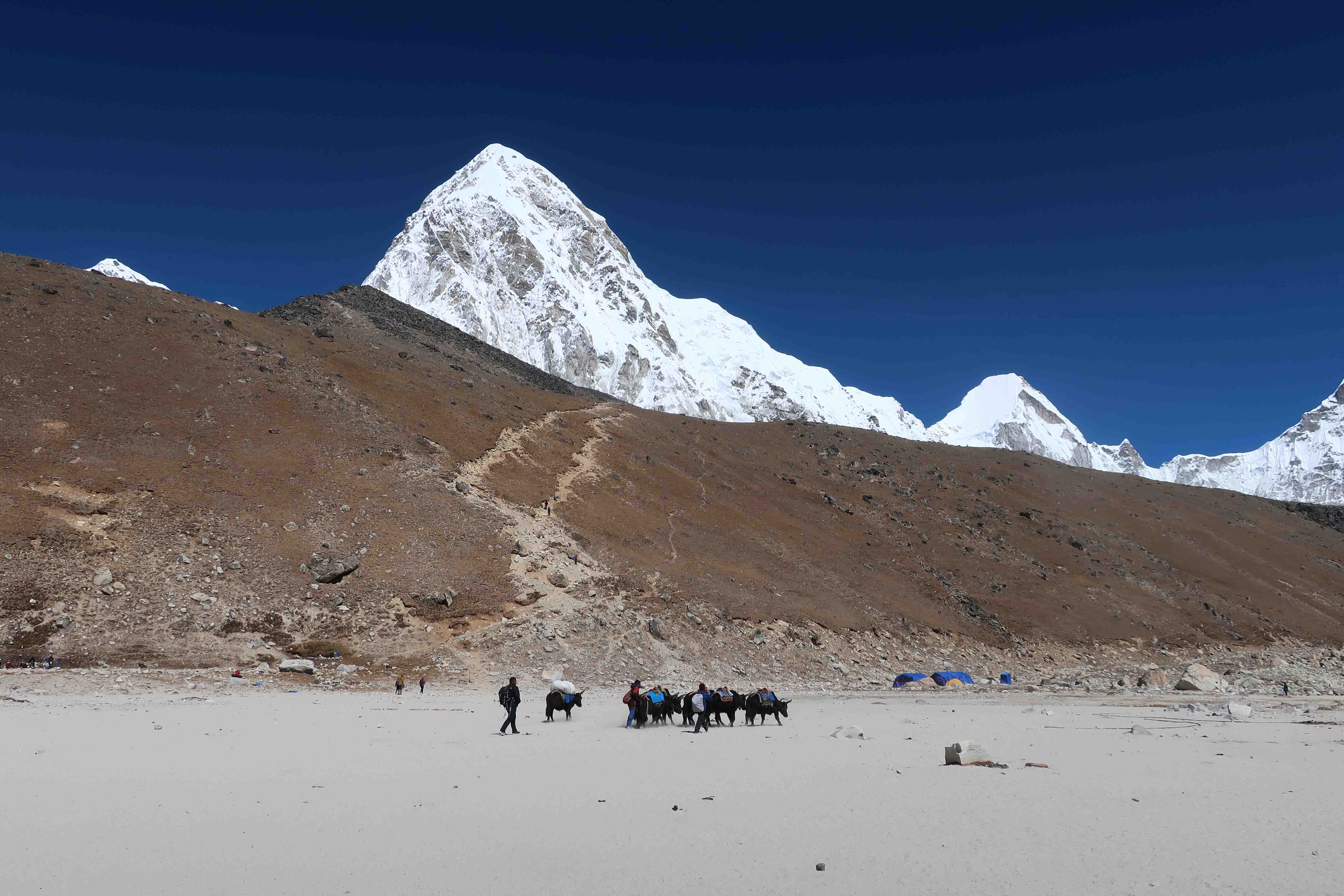
After settling in, we had a tea and a snack and decided to see the Everest Base Camp, leaving Kala Pathar for the next day as we didn’t know how tough each of those treks was.
Travel Tip: Because Gorak Shep is the final destination for the guided groups going up to the Everest Base Camp, it gets very crowded. And apart from just being crowded, groups get preferential treatment. At the restaurant in our teahouse, it was tough to find a spot to eat as all the tables were “reserved” for the guided groups. After waiting for a while, we were seated reluctantly by the teahouse owners, next to a condiments tray. We got served last after all the groups were fed and went to bed. As unpleasant as that may sound, this is just the way it works in the more crowded villages on the Everest Base Camp trek and if you’re travelling without a guide who can speak the language. However, you’ll still get served, just a little later.
Everest Base Camp expectation vs. reality
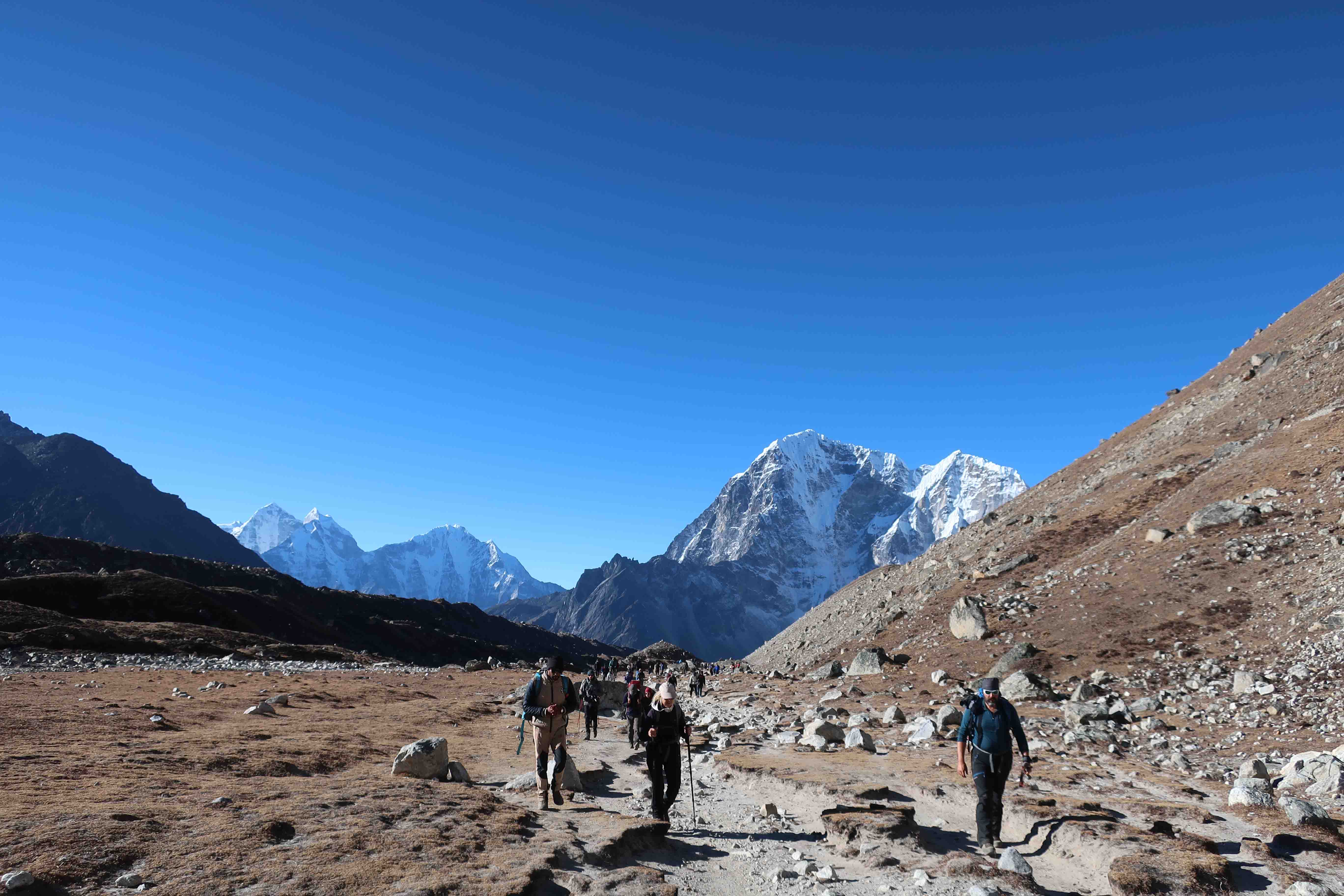
After chilling for a little bit and taking some photos of Mount Everest peeking through the Himalayan Mountains, we decided to take our daypacks and head out to see what EBC is all about. 🙂
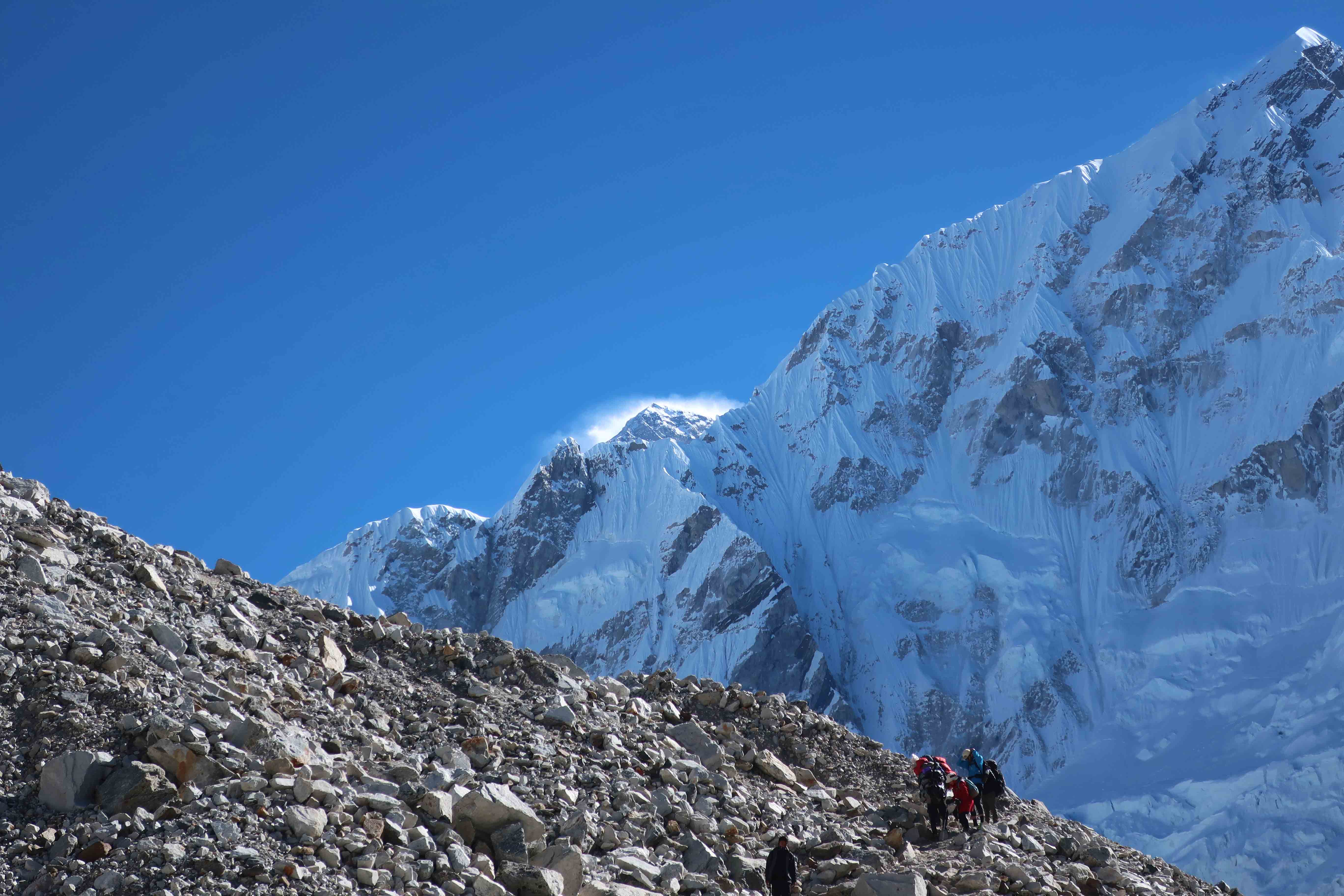
The hike starts behind Gorak Shep; to your left, you can see a narrow path to the top of Kala Pathar (the locals call it a hill, and in comparison with the giants surrounding it, I agree). It’s surprising actually how much white beach-like sand there is on the Everest Base Camp trek. The path then starts gaining elevation, but even with the air thinning, this was one of the most leisurely day hikes on the Three Passes Trek (it’s nothing compared to the Kognma La or Chola Passes, for example). When you get closer to the Everest Base Camp (no yellow tents in October), you walk on a pretty smooth path. You’ll know you’ve reached it after you see an accumulation of hikers taking photos at the Everest Base Camp stone marker.
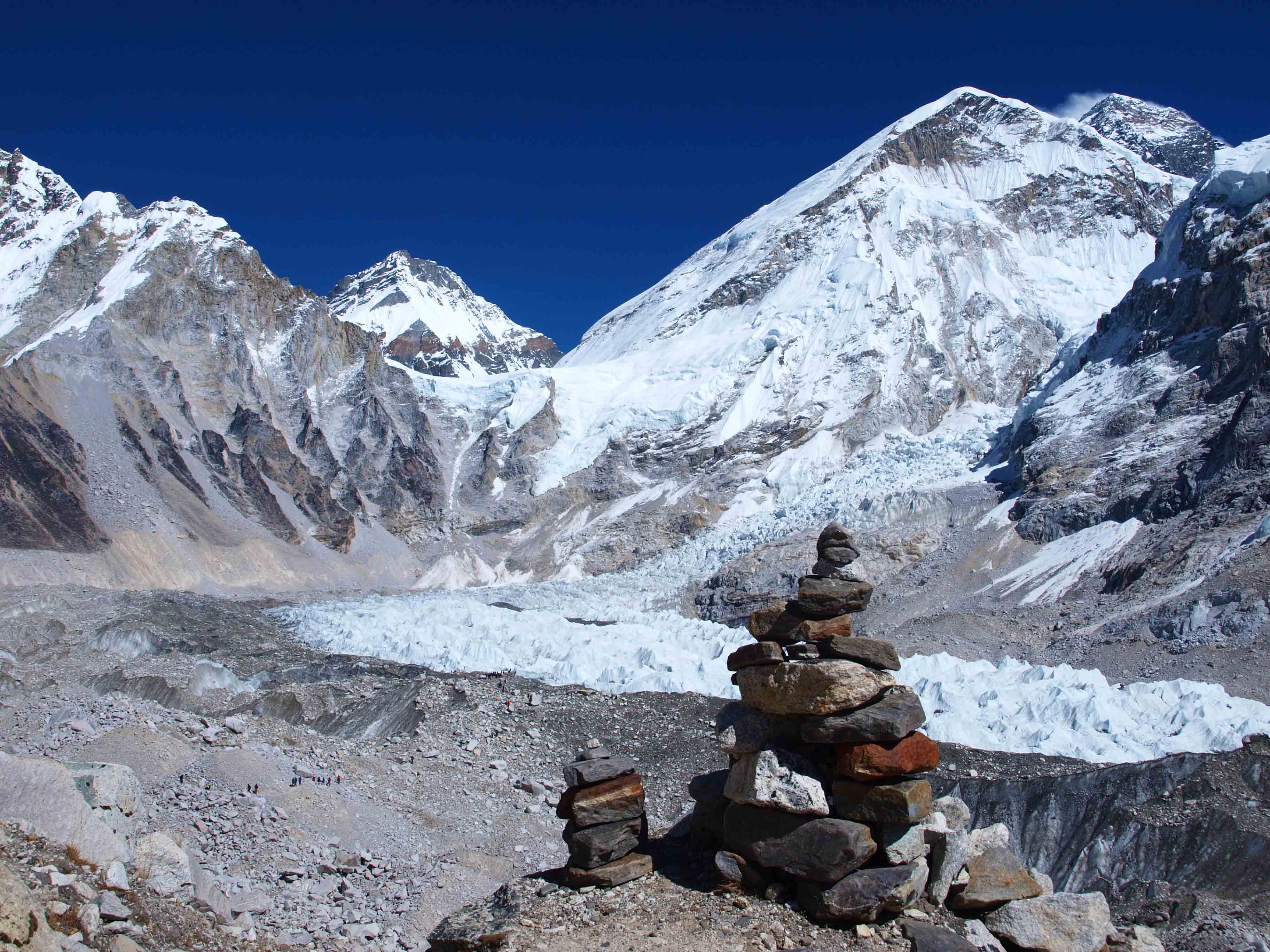
Finally, reaching the Everest Base Camp is a fantastic achievement in anyone’s life. However, that euphoric feeling fades quickly as loud crowds rushing to take the photo of a lifetime (some behaving rudely) surround you as you reach your destination. To get the famous Everest Base Camp photo with all the flags, you may need to wait in line for at least 30 minutes and then take a picture, hopefully without anyone refusing to step aside for a moment to let you take your shot. So be prepared for crowds.
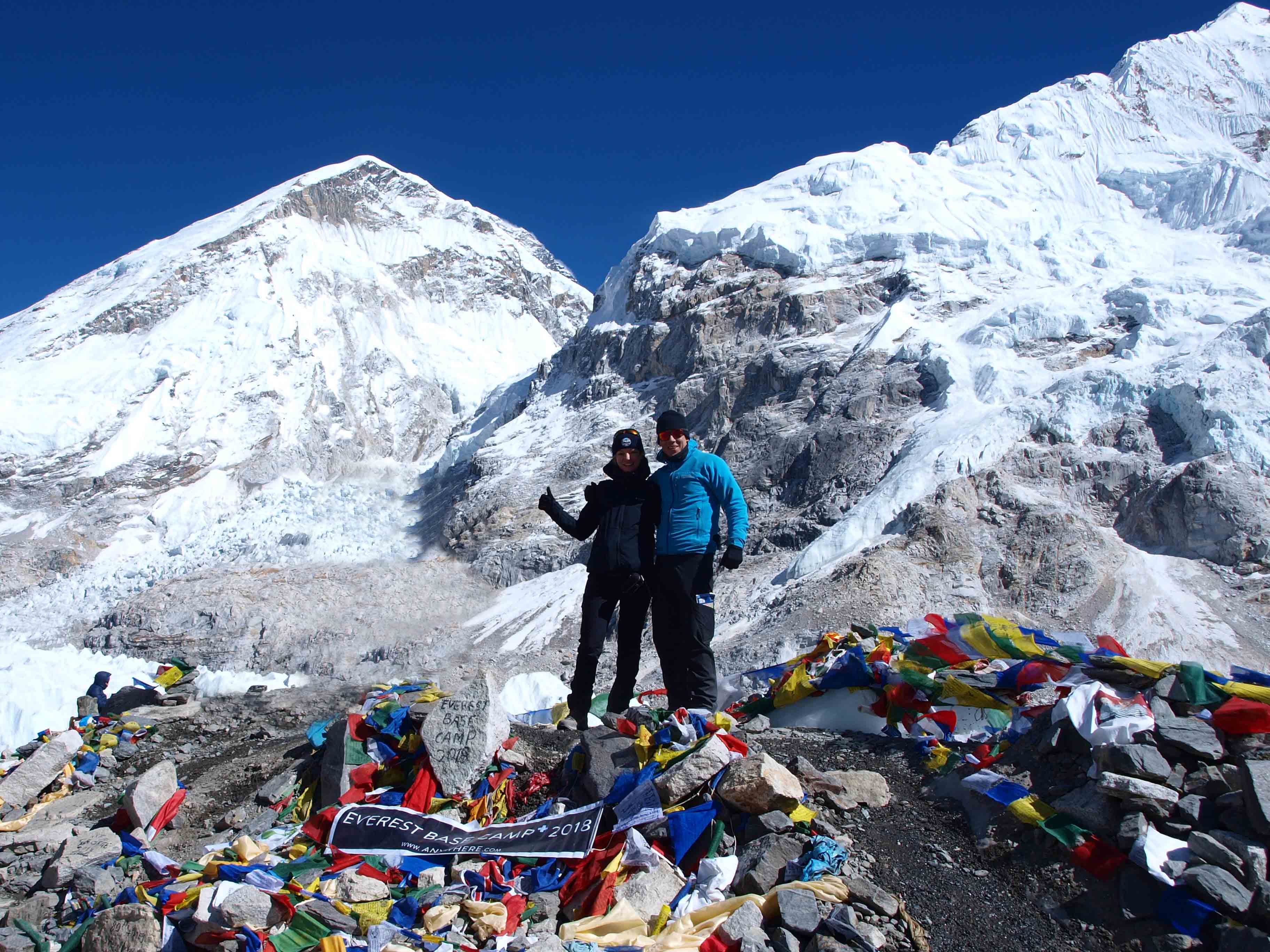
Travel Tip: You may face some pretty rude behaviour when waiting for your turn to take a picture. I patiently waited in line for over 30 minutes for our chance to take a photo, but a rude older gentleman with his guide insisted he was there first and refused to step down to let us take a quick photo. That experience, combined with most tourist groups going to the Everest Base Camp being obnoxious, changed my opinion of the guided EBC treks (except for the yoga guided tour). I’m not saying everyone is that way, but it’s just shocking how some people think it’s ok to blast Justin Bieber (no offence to his fans), ruining the moment for everyone else. It’s just common trekking courtesy, use your headphones if you need to listen to music, and be friendly to other trekkers, and they’ll be nice to you.
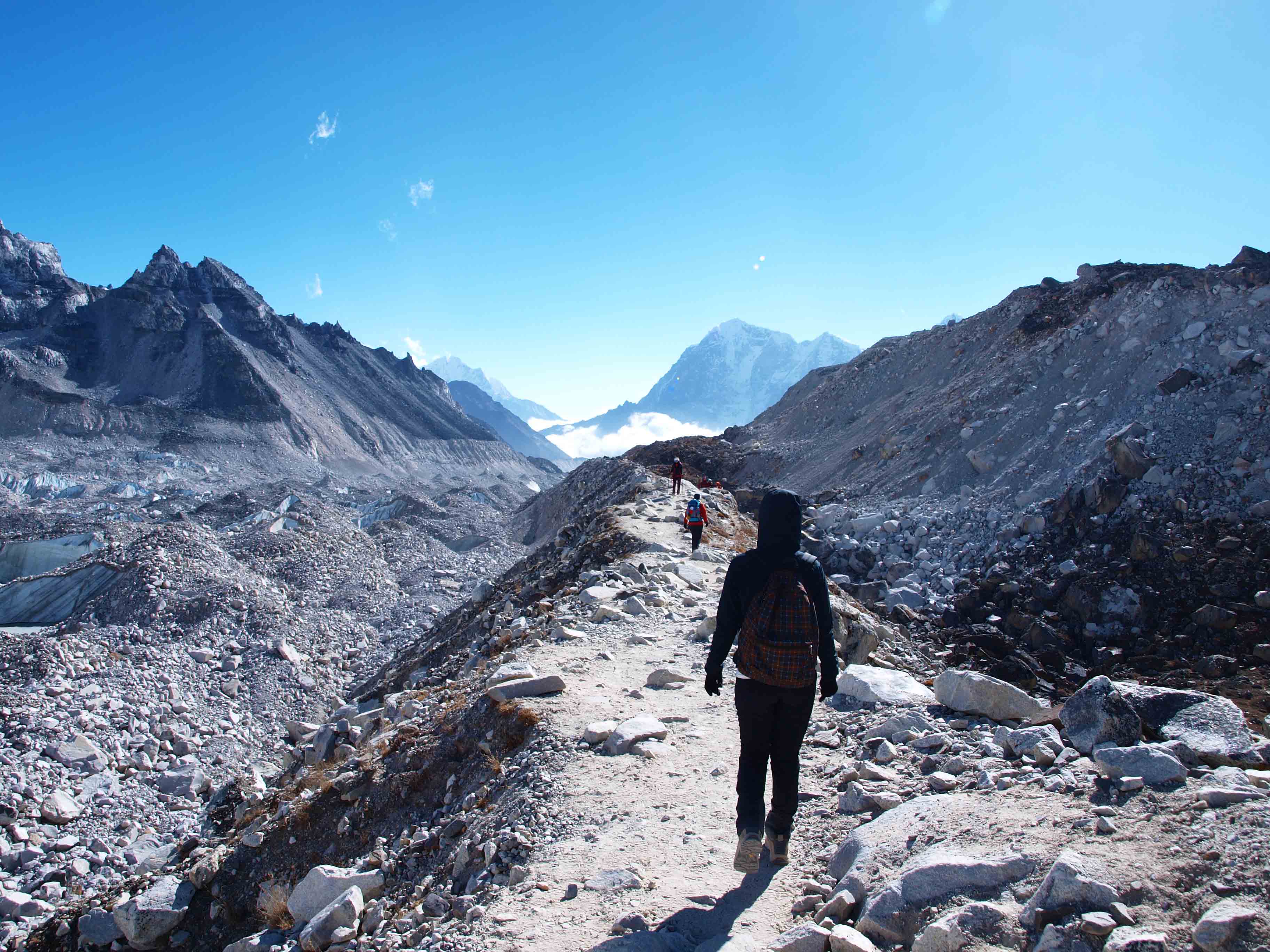
After an hour or so at the Everest Base Camp, we took a few photos, walked around, checked out the area and then decided to head back to Gorak Shep. Walking up to the base camp is a challenge, but you are genuinely rewarded for your efforts when you make it to the top of Kala Patthar because that’s when you get to see the 360 panorama view of the Himalayan giants. After trekking to the Everest Base Camp, I was happy that this was not the end of our trek, and there were so many more beautiful things to see on our Three Passes Trek. On the following day’s schedule was destination Kal Patthar – where I planned to take photos with my veil as this was our honeymoon (yes, I carried my veil around)! 🙂
Read next:
Everest Base Camp Trek Series:
View All Posts
- Day 1 – Toronto to Kathmandu
- Day 2 – Exploring Kathmandu
- Day 3 – Kathmandu to Lukla
- Day 4 – Namche Bazaar
- Day 5 – Namche Bazaar to Tengboche
- Day 6 – Tengboche to Pangboche
- Day 7 – Pangboche to Dingboche
- Day 8 & 9 – Dingboche to Chuchung
- Day 10 – Chuchung to Lobuche (over the Kongma La Pass)
- Day 11 – Lobuche (and the Italian Pyramid)
- Day 12 – Gorakshep to Everest Base Camp
- Day 13 – To Kala Patthar and Dzongla
- Day 14 – To Dragnak (over Chola Pass)
- Day 15 – Gokyo (with Gokyo Ri ascent)
- Day 16 – Back to Namche Bazaar
- Day 17 – Namche Bazaar to Lukla
- Day 18 – Lukla to Kathmandu
- Day 19 – Kathmandu to Toronto


